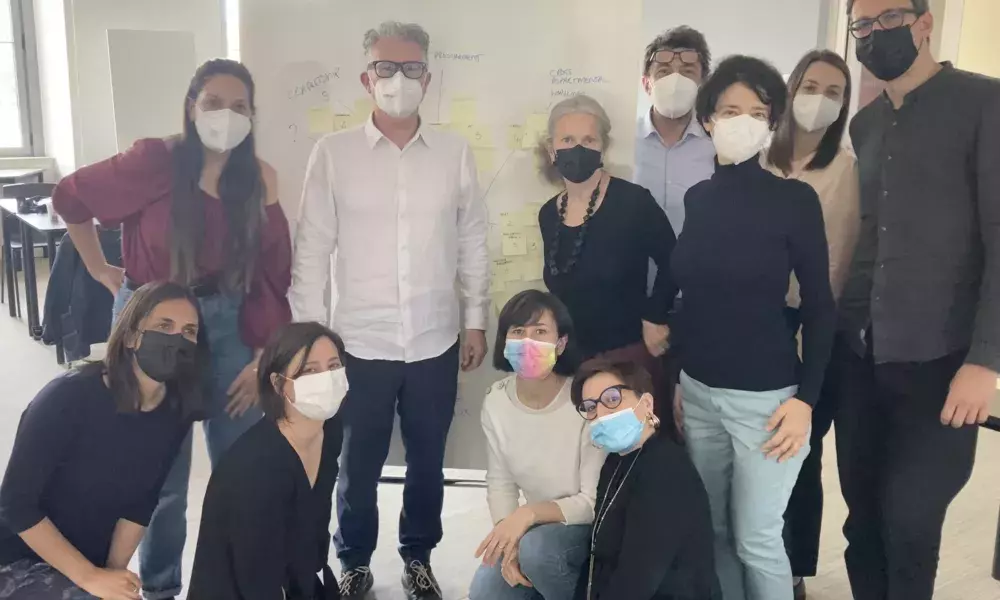Mapping the UIA innovation challenges with the Wish-Mi stakeholders

Working as the UIA expert for the Milano Wish-mi project for almost two years without meeting any of the team face to face has been one of my strangest career experiences. In more normal times, I would have visited the project every six months and by now would have built a strong connection not only with the city authority, but also with all of the partners round the table.
But these have not been normal times, as life has thrown us all a curve ball in the shape of the pandemic. As a result, last week I had the chance - finally - to visit the city and see for myself what’s happening there with the project. In the end, the timing was quite opportune as two of the key planks of the wish-mi adventure - the physical hubs and the digital platform - will soon go live. That means the next six months is a defining moment for this project, and for Milan’s ambitious plans to transform its relationship and service delivery to children, young people and their families.
To help provide a snapshot of the project’s current position, we conducted an interactive stakeholder session focused on the seven UIA innovation challenges:
- Leadership
- Public procurement
- Cross-departmental working
- The participative approach for co-implementation
- Monitoring and evaluation
- Communication with target beneficiaries and users
- Upscaling
Work in progress - Wish-MI stakeholders' analysis of the UIA innovation challenges
Although we had conducted a similar exercise online with MIRO during the project’s early days, it felt completely different this time. This was not just because the project has moved on since then, but also because the collaborative dynamic was very different when we were together in the same room, piggy backing on one another’s comments.
Everyone played an active part as we scored ourselves against each of the domains, creating patterns that illustrated the areas of consensus and those where partner views varied. This threw up some surprises for me. For example, although there have been challenges with the public procurement system, most partners scored this quite highly. Unpacking their scores, they explained that’s because they have quite low expectations and although it has been frustrating, they have experienced much worse. This triggered a lively exchange on where Wish-mi partners should focus their energies to increase the prospects of sustainable systemic change.
Other UIA challenges produced a different pattern of responses, including ‘communication with beneficiaries’ and ‘participation’ which were linked together and where partners disagreed about where we are and, crucially, what needs to be done. As the public elements of the project go live in the coming months, the quality of the project’s relationships on the ground will be key determinants of its success. At the same time, effective communication channels between stakeholders- as well as with project beneficiaries - will be key to building and maintaining trusted connections.
Ahead of the visit, not knowing the stakeholders, I had not been sure of the dynamics within the partnership. So I felt privileged to hear these sometimes heated exchanges and to see that they were being dealt with in an open and constructive way. For me, that’s the sign of a resilient group where individuals feel comfortable discussing sensitive and challenging issues. It’s also an indication that partners feel sufficiently committed to the project - something that’s much harder to gauge from a distance.
Recently, there has been some discussion amongst UIA experts about the value of these seven innovation challenges. But on balance I would say that they provide a useful starting point as a framework. Yes, they are ‘off the shelf’ and quite top down, but there is scope to customise them as the Wishmi partners did by adding an eighth dimension - the working relationship between the public, private and NGO sectors. In this way, we have a framework that is consistent across all UIA projects, whilst also acknowledging distinct local features. We’ll have the chance to revisit these challenges when we come together next in the autumn.
In the meantime, we will continue with our online exchanges, knowing that the future is hybrid as we explore the right balance between online and face to face collaboration. But as I sat with partners round a table last Wednesday night eating pizza, enjoying a beer and talking off the record about the project, I was forcefully struck by the missed connections in these two years and the importance of being there, in real life, if we really want to understand and support the deeper innovation process.
About this resource
The Urban Innovative Actions (UIA) is a European Union initiative that provided funding to urban areas across Europe to test new and unproven solutions to urban challenges. The initiative had a total ERDF budget of €372 million for 2014-2020.
Similar content




